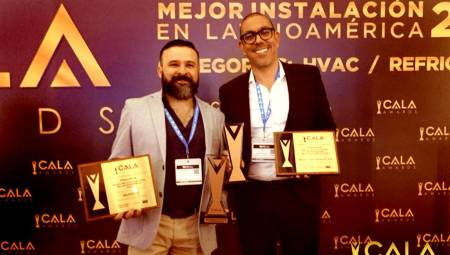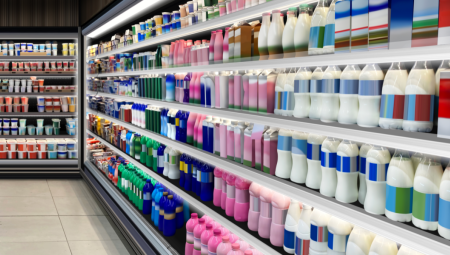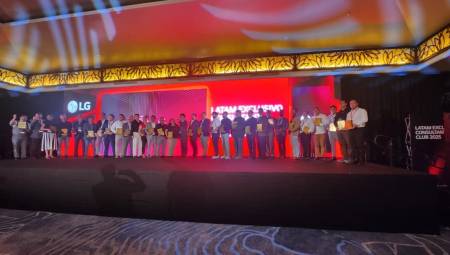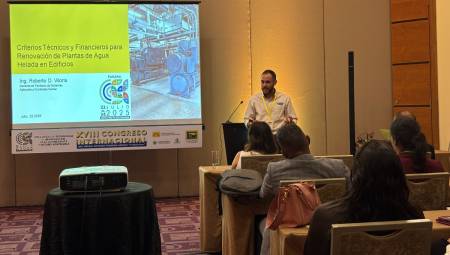Among these agreements and treaties that were signed for environmental purposes are the Montreal and Kyoto protocols, signed in 1987 and 1997, respectively. The first seeks to protect the ozone layer by controlling the production of certain substances that destroy it, while the second aims to reduce greenhouse gas emissions by 5.2% for the period 2008-2012, based on 1990. It is worth saying that both treaties directly concern refrigerants, since gases have both ozone-depleting potential and global warming potential.
This led to the adoption of measures, as stated above, leading to the control and replacement of some compounds, mainly those known as CFCs (fluorocarbons) by substances such as HCFCs and HFCs.
Beyond going into details related to the control process in the production of the prohibited compounds, the purpose of this note is to know the actions that have been taken in some Latin American countries to control the circulation and commercialization of some of the main gases in question: CFCs 11 and 12, as well as HCFC 22. For this reason, we consulted managers in the Technical Unit of Ozone, of Colombia; Fondoin – Industrial Reconversion Fund-, of Venezuela; and Conama, Chile's National Environmental Commission.
What was found in the interviews is, in a way, hopeful.
Strict compliance with the standard?
Latin America has always been seen as a very tropical region when it comes to monitoring and adopting regulations. The particularities of the market itself make it difficult to monitor whether international environmental laws are in fact being fully complied with.
The comments provided by the professionals are inclined towards the adoption of regulations by their countries, but they agree that there is a problem that has not been completely eradicated: the smuggling of substances, as well as the entry of prohibited refrigerants labeled as substances of free operation and use.
In Colombia, the entity in charge of these elements is the Ozone Technical Unit (UTO), attached to the Ministry of the Environment, Housing and Territorial Development. Its national director, Jorge Enrique Sánchez, spoke about the adoption of the standard in this country.
In his opinion, Colombia began the adoption of these regulations late and referred specifically to the issue of the Montreal Protocol. "It was adopted in 1992, five years after its signing. In Colombia, it began in 1994, which is when the UTO began work, which indicates that we could be one of the last countries in Latin America to legalize the agreement," he said. In contrast, he added that the late implementation of the legislation was offset by a strong commitment by the industry and indicated that manufacturers of refrigeration systems were almost among the first actors to demand the placement of adequate legislation for the commitment, because they felt that at one point they could be affected by the country not being in line with international environmental laws. {mospagebreak}
In Venezuela, the entity in charge of the issue is the Ozone Technical Unit, of the Industrial Reconversion Fund, Fondoin. Gianfranco Ruggiero and Pedro Sallent, heads of the entity, affirmed that Venezuela assumed the commitments early, in contrast to what happened in Colombia. "Venezuela signed the Vienna Convention in 1985 and the Montreal Protocol in 1987, which made us commit to eliminate ozone-depleting substances from the outset. At the national level, multiple measures have also been adopted, such as the adoption of the protection of the ozone layer within the constitution of the republic and the promotion of legislation to guarantee compliance with this international regulation, " Assured.
Chile followed suit in March 1990, ratifying the Montreal Protocol as well as each of its amendments. According to Jaime Ugalde, communications director of Conama, "among the activities developed under the Framework of the Country Program are various projects to reduce and eliminate the use of SAOs (ozone-depleting substances), in areas as diverse as the sterilization chambers of hospitals, manufacturing processes of insulating foams and refrigeration equipment, automotive air conditioning systems and the search for alternatives to the use of methyl bromide to fumigate soils. All this is complemented by training activities for both refrigeration technicians and customs officials who control the entry of these substances into Chile. There are also dissemination and public awareness campaigns underway."
Some measures taken
An important aspect presented by the professionals interviewed are the measures that each country has implemented to cover the spectrum of refrigerants, both from the part of legislation and training with technicians, who are the ones who are ultimately in contact with the gases and who must know in detail how to handle them. Each country has made different actions in this direction, although in themselves they do not differ much.
In Colombia, for example, with funds from the Montreal Protocol, a conversion program was initiated in the area of commercial refrigeration, as well as the entire segment of manufacturing domestic polyurethane foams. "Currently in Colombia, domestic, commercial or industrial refrigerators, as well as air conditioning systems, or vehicles with these substances are not produced or imported; we can affirm that all sectors are closed, a process that ended in 2007," sánchez said.
Venezuela, for its part, stopped the production of CFCs 11 and 12, for which it proceeded to compensate the companies that were engaged in this activity, all with the help of the multilateral fund of the protocol.
Chile, to support the elimination of CFCs in the refrigeration and foam sector, executed between 1995 and 2005, the Financing Program for Technological Conversion in two phases (called TECFIN I and TECFIN II), a fact that allowed to eliminate 537.54 tons. PAO of CFC-11, CFC-12 and R-502, in the refrigeration and foam sectors, through the delivery of a subsidy for the reconversion of the 31 largest producing companies in the country.
Also, since 2003, the PMR (Refrigerant Management Plan) has been implemented in Chile, which consists of four modules, the first being designed to strengthen the national capacity to control regulations; the second seeks to promote the application of Good Refrigeration Practices (BPR); the third corresponds to the refrigerant recovery and recycling program; module four corresponds to the realization of a campaign to reach the population en masse and sensitize them to the importance of eliminating CFCs. {mospagebreak}
R 12 and R 22, under the magnifying glass
There are many actions that have been taken internationally on this type of compounds. It is worth remembering that compounds such as R 11 and R 12 have been completely banned in their use since 2001, while substances such as R 22 are in the process of prohibition and transition. The question of what is happening in these countries with such substances is therefore pertinent.
It is worth noting that R 22 was discussed during the last meeting of the Montreal Protocol, so from 2009 no new equipment using this substance should be manufactured. In addition, in 2013 the real control program will begin, which involves the setting of reduction parameters based on a base established in the coming years; this measure applies not only to 22 but also to 141 b and 123.
In Colombia, for example, there is still consumption of CFCs, but exclusively in the maintenance sector of old refrigerators manufactured before 1997. For this sector, the government needs to allow the entry of this substance. To somehow control their handling, the government is advancing an advisory program for maintenance technicians in which they are explained how to recover ozone-depleting refrigerants. "We have a program with the National Learning Service -SENA- to certify these technicians based on work skills, but we also do a lot of dissemination," Sánchez said.
But there is another problem that can lead to the efforts made by the institutions coming to nothing and that is smuggling. Colombia has faced this problem in the northern zone, where the characteristics of the border make it a bit difficult to control. For this, the coffee customs authorities have been receiving advice from an institution called Environment Canada, so Colombian officials are equipped with equipment to detect technical contrabands. However, there is a contraband that is more rudimentary and that Sánchez described as difficult to handle, because for him, since there is demand outside and it is a good business there will always be someone who enters it illegally.
In Venezuela, government policy has also been inclined towards the training of technicians, as well as customs officials in the face of a growing smuggling of prohibited substances. "In many countries, an illicit trade in these substances has been established, which has affected the processes of reconversion. This was observed mainly in the year 2000, but fortunately today these processes are being controlled and officials are increasingly trained to detect this type of irregularities, "explained Ruggiero, given the particularity that occurred in Venezuela where most of the contraband entered through customs.
With regard to R 22, Venezuela, said Pedro Sallent, has moved forward and between 2004 and 2005 began the implementation of the national training plan in Good Refrigeration Practices, aimed at technicians who have their source of livelihood in the maintenance of systems. In this program, technicians can understand the characteristics of these substances and how they can handle it properly, respecting the internationally established dates according to their use. "This is a 32-hour course that is taught in three days; we mentioned the training plan because although its raison d'être was the progressive elimination of CFCs, Venezuela from the beginning contemplated that not only these compounds were of concern but also that care should be taken with HCFCs, in this case R 22, but also with HFCs like the R 134 a," Sallent said. {mospagebreak}
To quantify, there are currently about 2600 technicians trained in this program and practically the entire national territory has been reached.
Chilean policy in this regard is very similar to what is being done in Colombia and Venezuela. Jaime Ugalde commented that "in the case of Chile, according to the Montreal Protocol, the R-22 will only begin to be controlled in 2013, the year in which imports will be frozen at the average level of 2009 and 2010. This control will be applied for the gradual reduction of the use of HCFCs, being totally prohibited as of January 1, 2030."
Unfortunately, for this note it was not possible to get the participation of the Mexican environmental agency, Semarnat. In previous articles we have been able to gather data on what this government is doing, which is quite interesting in environmental and refrigerant matters.
For now, it can be said that the picture "paints" positively in Latin America, according to what was achieved in the interviews presented. It will be important to continue monitoring this process and for government agencies that have not yet implemented such programs to do so. We hope, from this medium, to present more information about it soon.













